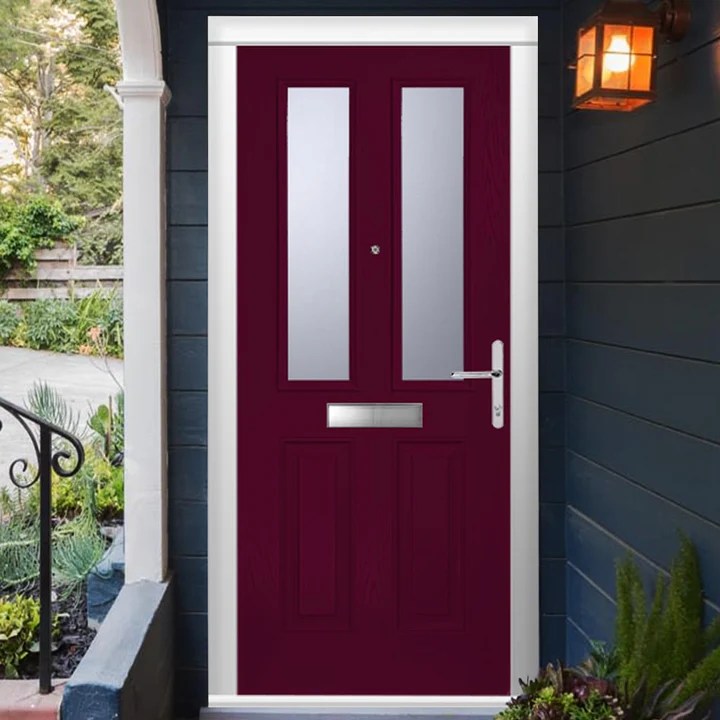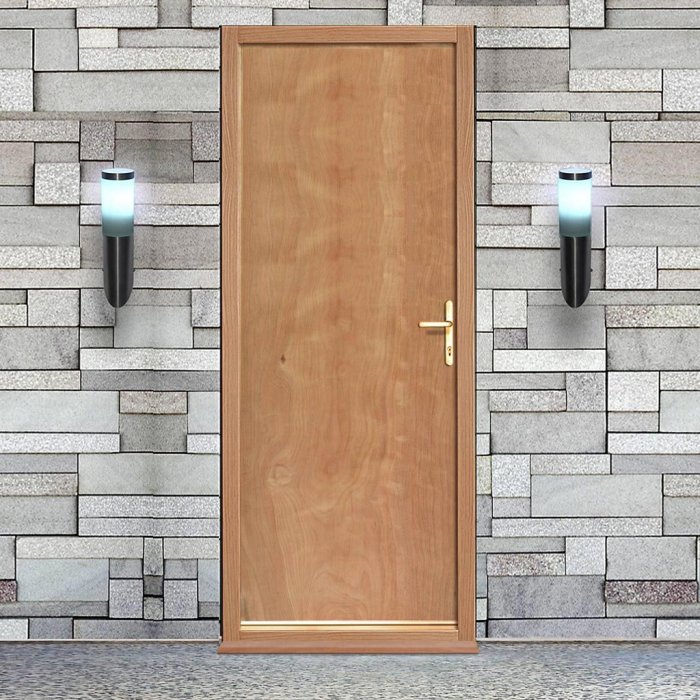Exploring the World of External Fire Doors
External fire doors play a crucial role in ensuring the safety of both commercial and residential buildings. From the materials they are made of to their installation and maintenance, there is much to learn about these essential components of fire safety.
In this guide, we will delve into the intricacies of external fire doors, exploring their features, components, regulations, and more to provide a comprehensive understanding of their importance.
Overview of External Fire Doors

External fire doors play a crucial role in buildings by compartmentalizing fires, preventing the spread of flames, smoke, and heat to other areas. These doors are specifically designed to withstand high temperatures and resist fire for a specified period, allowing occupants to evacuate safely.
Types of Materials Used
External fire doors are constructed using various materials, including:
- Steel: Known for its durability and fire-resistant properties, steel fire doors are commonly used in commercial buildings.
- Wood: Wooden fire doors provide a traditional and aesthetically pleasing option for residential buildings while still offering fire protection.
- Glass: Fire-rated glass doors are used in areas where visibility is crucial, such as corridors and stairwells.
Importance of External Fire Doors
Having external fire doors installed in both commercial and residential buildings is essential for several reasons:
- Ensures the safety of occupants by containing fires and allowing time for evacuation.
- Meets building regulations and fire safety codes to comply with legal requirements.
- Protects property and assets by minimizing fire damage and loss.
- Provides peace of mind for building occupants, knowing that proper safety measures are in place.
Features and Components
External fire doors are specifically designed to withstand fire and prevent its spread within a building. These doors are crucial for ensuring the safety of occupants and minimizing property damage during a fire incident. Let's explore the key features and components that make external fire doors effective in their role.
Fire-Resistant Features
External fire doors are equipped with several features that contribute to their fire-resistant properties. These include:
- Fire-rated materials: External fire doors are typically constructed using fire-rated materials such as steel, fiberglass, or solid wood. These materials have the ability to withstand high temperatures and prevent the passage of fire.
- Intumescent seals: These seals expand when exposed to heat, effectively sealing the gaps around the door to prevent the spread of fire and smoke.
- Fire-rated frames: The frames of external fire doors are also made from fire-rated materials to ensure the overall integrity of the door assembly during a fire.
- Fire-rated glass: In some cases, external fire doors may include fire-rated glass panels to maintain visibility and prevent the spread of fire.
Components of External Fire Doors
External fire doors consist of various components that work together to provide fire resistance. These components include:
- Door leaf: The main panel of the door that is constructed from fire-resistant materials.
- Hinges: Fire-rated hinges are essential to ensure the door functions properly and remains in place during a fire.
- Locks and latches: These components are designed to secure the door in place and prevent unauthorized access.
- Closers: Door closers are important for ensuring that the door automatically closes in the event of a fire to contain the spread of flames.
- Seals: Intumescent seals are placed around the edges of the door to prevent the passage of fire and smoke.
Performance Based on Materials
The performance of external fire doors can vary depending on the materials used in their construction. Steel doors offer exceptional fire resistance and durability, making them a popular choice for high-risk areas. Fiberglass doors are also fire-resistant and provide good insulation properties.
Solid wood doors are aesthetically pleasing but may not offer the same level of fire resistance as steel or fiberglass doors. It is essential to choose the right material based on the specific requirements and fire safety standards of the building.
Installation and Maintenance
Installing and maintaining external fire doors is crucial to ensure the safety of occupants and the effectiveness of the doors in case of a fire emergency.
Proper Installation of External Fire Doors
Proper installation of external fire doors is essential to ensure they function correctly in the event of a fire. Follow these steps for a successful installation:
- Start by carefully measuring the door frame to ensure the fire door fits properly.
- Hang the door on its hinges and make sure it swings freely without any obstructions.
- Install the door closer and ensure it closes and latches securely.
- Fit intumescent strips around the edges of the door to help seal the gap in case of a fire.
- Test the door to make sure it closes automatically and securely.
Importance of Regular Maintenance
Regular maintenance of external fire doors is crucial to ensure their longevity and effectiveness. Neglecting maintenance can compromise the door's ability to withstand fire and protect occupants. Common maintenance practices include:
- Regularly inspecting the door for any signs of damage or wear.
- Checking the door closer to ensure it functions properly and closes securely.
- Testing the intumescent strips to make sure they are intact and in good condition.
- Keeping the door and its components clean and free from debris.
- Conducting periodic fire door inspections by certified professionals to identify any issues early on.
Regulations and Compliance
External fire doors are subject to strict regulations and compliance standards to ensure the safety of occupants and property in the event of a fire.
Regulations and Standards
External fire doors must meet specific regulations and standards to guarantee their effectiveness in containing fire and smoke. These regulations often include requirements for fire resistance, self-closing mechanisms, and proper installation.
Certification Process
The certification process for external fire doors involves testing the door's performance against fire and smoke according to established standards. Once a door meets the requirements, it is certified by authorized bodies to ensure compliance with safety regulations.
Consequences of Non-Compliance
Failure to comply with fire safety regulations related to external fire doors can have severe consequences. Non-compliant doors may fail to contain fire and smoke effectively, leading to increased damage and risks to occupants' safety. Additionally, non-compliance can result in legal penalties and liabilities for property owners.
Conclusion

As we conclude our exploration of external fire doors, it becomes evident that these doors are not just barriers but guardians of safety. Understanding their significance in protecting lives and property is paramount in maintaining a secure environment.
FAQ Insights
What materials are commonly used for manufacturing external fire doors?
External fire doors are typically made of materials such as steel, timber, and composite materials to ensure fire resistance.
How often should external fire doors undergo maintenance?
Regular maintenance checks should be conducted at least once a year to ensure that the doors are functioning correctly and are up to fire safety standards.
What are the consequences of non-compliance with fire safety regulations related to external fire doors?
Non-compliance with fire safety regulations can result in fines, legal penalties, and most importantly, compromised safety in the event of a fire.




